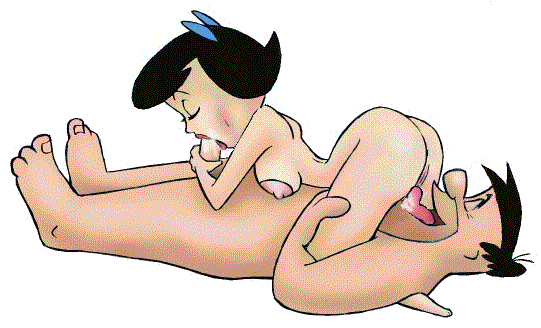-
Posts
5,758 -
Joined
-
Last visited
Content Type
Profiles
Forums
Events
Everything posted by Gixer1460
-
Agreed but there are only two short peaks before a tall one unless it's just a tooth counter and the 'missing' one is causing a spike added to the following one.I'm just used to seeing regular pulses with missing tooth giving a definite gap. BTW my 4 tooth was 4 teeth + 1 cam tooth - ancient Motec M8 ECU and low'ish turbo CR.
-
@Arttu - btw a 4 tooth modified std GSXR wheel will work - that's what I used on mine so I know it does - admittedly not great but it does. Correct me if i'm wrong but i'm reading only three teeth registering? Possibly a reason it won't start..... picture of your wheel may help?
-
That's a new one on me! If they are solid mount the whole coil will vibrate together with its mount and the frame, at whatever freq. Rubber mounting just changes the range where it vibrates on its own. I've used US made dyna coils from the 70's never a problem - it would seem Dyna outsourced their coils from Asia - these largely seem to experience the defects! Really - how difficult is it to wind some thick and thin copper wire round an iron core and mould resin round them? If the OEM's weren't so stupidly expensive they would be a 'top tip'!
-
Maybe so on a Blandit but the sump plug can be the lowest thing on a later GSXR with a Vee sump and 4-2-1 exhaust!
-
That still doesn't make any sense! Yes lower tensile bolts can be +/- (why anyone would not tighten to prescribed torque is strange!) but they will stretch the more torque that is applied actually reducing the applied clamping force - great addage - 'More is often Less'. If the stock bolts were changed for, say 12.9HT bolts, a higher (above std spec.) can be applied and still be within their own quoted yield stress and as they stretch less, that pressure goes into the clamping force.
-
Got to compare apples with apples! A 33mm anything is never going to match a 36mm anything for N/A airflow - simple physics! Why would anyone bother converting a CV to direct lift when a) it doesn't have an accelerator pump circuit to stop it falling on its arse when the handle is yanked and b) a comparable direct lift carb is available in sizes 34mm - 55mm!
-
The modded 33mm slide carbs have nearly 20% less airflow area - the CV throttle butterfly doesn't get near that as an obstruction hence flow less even though unobstructed - now if it was a 36mm flat slide against the CV - no contest!
-
Why would smaller carbs (bored out to 33mm) be better than the std. 36mm bore carbs - the fella said they were breathless, guess why! Good for a 750 not an 1100/1200 with big lungs!
-
Moto GP bikes have to use traction control to stop them flipping and they hardly ever see a straight line and probably have the best jockeys in the world on board ! ! ! And fyi, a high CG is NOT what any 'Straight line' bike wants - unless they want to go slow! Because we build stupidly powerful bikes - doesn't mean we have to use it all + the chassis hardware of that particular bike is probably waaaay more capable than any normal rider could exploit.
-
Not out of the question - not hard to do, mainly used with high comp motors but should work as well with regular types. Or turbo it - nice low comp then
-
Don't I feel like a twat now! LOL!
-
You know, all the times i've seen that bike down a Seans I never noticed that - obviously sweary Bob listened to Steve Burns after all!
-
Yes I am aware - i'm guessing the EFI is allowing a well retarded timing for cranking cos it spins over well quick for a (probably) highish comp 1640cc motor.
-
Boy - pay attention in the back................... it has EFI in the video ! Its a ProStock motor if it was legal - nearer a ProMod, but button start is a nice touch
-
Yeah - real street, grocery getter bike ! And what part is still an ET? - Frame .... nope, suspension .... nope, Engine - maybe some engine covers. There is probably $100k or more in that bike + the hired gun, 8yr old sized jockey LOL!
-
Unless you are going to stump up for what will be virtually one off turbo cams, std cams will serve even fairly high output motors very well. Use some adjustable cam wheels, dial the cams into 108 - 110 degrees - job done!
-
Car guys know jack shite about bike carbs except than they are cheaper than Webers! The use of a choke is a complete mystery to them so not surprised about the 'modification'. Re your little brass accessory - i'd be looking at pressed in jets or jet tips? - where from - not a scooby! Anything in 1 or 2 that looks similar?
-
Hope they were a bargain!
-
Be very odd if it 'was' made like that!
-
If the connections are below oil level it will not drain ! Subject to the cooler size probably between an additional 0.25 - 0.5L
-

Limitations on turbo placement or orientation?
Gixer1460 replied to Zweihammer's topic in Forced Induction
Its not something much discussed as most installs are horizontal or upto 10 degrees off. Turbo bearings both plain and BB are designed for radial loads with a small passive axial pressure bearing to keep the wheels away from the scroll surfaces. This position also assists with natural drainage of oil out of the core. Shifting it vertical will remove all the radial load and transfer it axially needing a proper hi-speed thrust bearing and a way of preventing the oil pooling / pissing through the bearing and smoking like a tractor during start and general running - in all, a bad idea! -
Does it start on the button or take a few cranks? It's usually slow cranking or crank inertia kick back - they are quite fragile HT bolts as std. I eventually gave up after breaking allsorts of metal types - I serviced the s. clutch, springs, rollers and pins and MIG welded 3No 1/2" stitch welds from clutch to rotor - never broke again (using high comp and 24v starting!)
-
Copper is an alternative often used with turbo's - providing the block is O ringed / wire ringed!
-
I don't know but top engine builders won't go below 0.5mm squish for a reason! A rod in a super hot race engine @ 12,000 rpm could easily stretch / use up all the bearing clearances that total 0.5mm?
-
Its the edge of the piston that determines the squish not the crown - if the crown is level with the gasket surface you'll be losing power through a bad burn / combustion. The edge should be closer to the gasket - a bit of solder placed on the piston edges in some grease during a dry build with a used gasket will reveal what it will be - ideally as noted above


